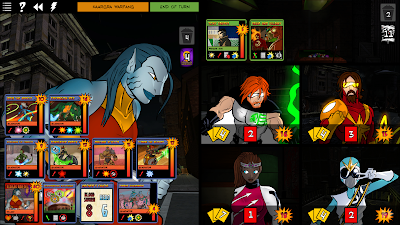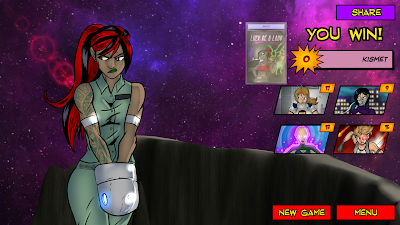 |
| Legacy takes a hit from the villain's terrible might hand. |
 |
| A laudable, if somewhat generic sentiment. |
The employment of ersatz heroes and standard types has a long and beloved history in comic books themselves. Looking for Supermans? You can take your pick; in addition to countless spinoffs, reboots, and re-imaginings from the Communist Superman of the brilliant Red Son to the bizarre bearded maniac of Superman: at Earth's End, there are plenty of unmistakable knock-offs: the title character from the self-aware homage Supreme; the Samaritan from Kurt Busiek's loving tribute to comic archetypes, Astro City; the subversive Omniman from Invincible and his eponymous son; and too many others to exhaustively catalogue. Superman is of course a valuable intellectual property, and one may not reproduce his likeness without the permission of the owners of that property, though that line has become blurred with the growing benign neglect of such rights when it comes to fanfiction and fanart. But in the majority of cases, if one wants to tell a Superman story without access to the Superman license, or to tell a story exploring the concept of Superman without necessarily involving the character himself, one must necessarily turn to disguises, obfuscations, and winking nods.
 |
| Things can get pretty hairy if the cards don't go your way. I wish I could say I bounced back from this. |
But that raises an interesting question. What is it exactly that makes Legacy so clearly a dollar-store version of Superman? After all, Legacy is not a refugee from a doomed alien planet, nor does he gain his powers from the yellow sun of Earth; he is a normal human whose superhuman abilities come from a magic ring passed down through generations of his family. He has blonde hair, not black, and his skin-tight bodysuit is primarily white with blue accents, not primarily blue with red accents. He may be quite strong, but he does not seem to have the ability to set entire planets on different orbits, nor is he invulnerable -- he takes damage from attacks just like any of the other heroes. Obviously, if we are to maintain that Legacy is in some sense the same character as Superman, these superficially defining attributes are not in fact essential to the character.
Well, Superman has been called the Big Blue Boy Scout. He is a leader, and he leads from the front, using his invulnerable body to shield others from harm; as mentioned before, Legacy's abilities also involve him taking damage for the greater good. And Superman, by his moral example, charisma, and unfailingly (most of the time) optimistic outlook, inspires his teammates in the Justice League to strive their utmost and persevere in the face of adversity; likewise, Legacy's signature power is to increase the damage dealt by other heroes, and alternate powers involve the same kind of bolstering of other players' abilities. Finally, though he has at times been portrayed as a super-genius, Superman has a tendency to turn first to force to solve problems, as employing unmatched force is what he's best at; and Legacy's cards also tend to go for the jugular and portray employment of brute strength rather than cleverness, guile, or knowledge. Other off-brand versions of Superman tend to embody similar attributes, or in some cases to play with them and deconstruct their implications. So these, rather then the actual details of Superman's biography, appearance, or exact set of powers, might better serve as definitional of the "Superman archetype".
 |
| Justice is restored, but something tells me it's not the last we will see of this rogue. |
The concept of an archetype was first introduced by psychologist Carl Jung as a description of deep aspects of the human unconscious personality that drive our behaviour. Jung thought that reflections of these divisions of the self showed up in mythology and repeated in every culture's traditional stories, a concept that was further codified by Joseph Campbell in his concept of the "hero's journey". Superhero comics, among other genres, have often been described as modern mythology, and the concept of the archetype has been applied to such repeatedly reproduced sets of characteristics as we have been discussing. There is something about Superman, about Batman, about mad scientists like Baron Blade that calls to something deep in our psyche, and that is why we keep endlessly reinventing them. Superman himself is just one version of a character type that is as old as human civilization -- a Galahad, a Cu Chulainn, a Siegfried, an Arjuna; a paladin, a carrier of a culture's deepest values and a reflection of what it desires itself to be. Superman embodies Truth, Justice, and the American Way, and Legacy by implication stands for similar values. There is a little Superman in all of us, appealing to the angels of our better nature, whispering to us that righteousness can triumph over evil, that the innocent can be protected from the predators of the world, if we can only apply martial force in a just and measured way. And that is why, although Superman the Last Son of Krypton and his iconic "S" may be copyrighted intellectual property, the idea that is embodied in Superman, in Legacy, and in a hundred other heroes never can be. If one expression is locked up by a corporation eager to capitalize on its popularity, another will inevitably arise. The archetype is the common property of all humanity, an expression of the collective unconscious that cannot die, that cannot be owned, and that cannot be controlled.